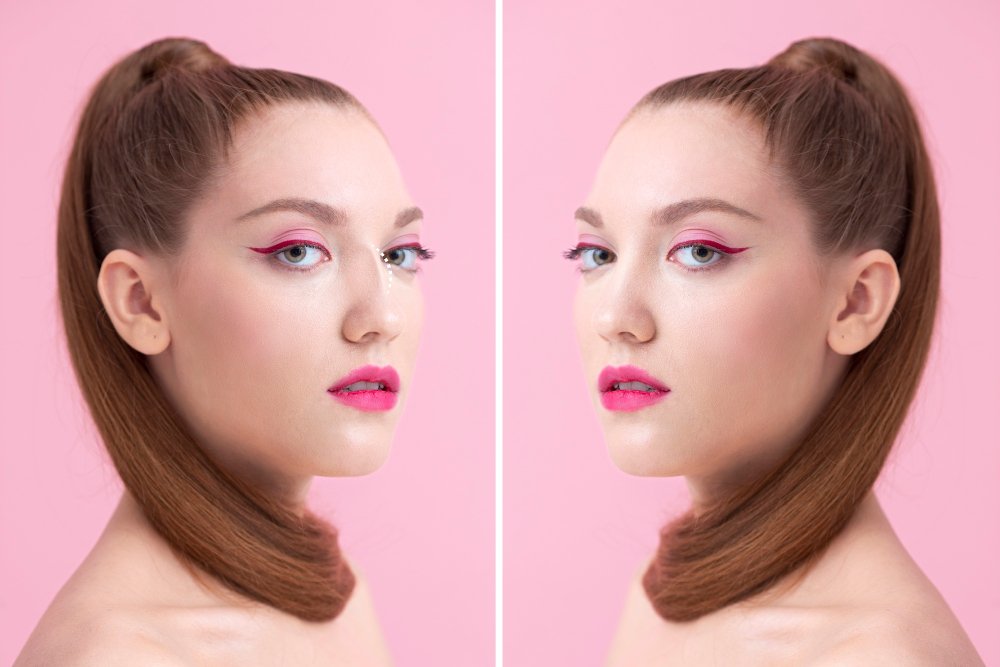A lip lift is a popular facial cosmetic surgery designed to shorten the distance between the nose and upper lip, enhancing lip fullness and improving overall facial balance. While the procedure is generally safe and highly effective—especially in Korea’s advanced cosmetic surgery clinics—like all surgeries, it comes with potential risks and complications.
This guide explores the most common lip lift complications, how Korean medical professionals manage them, and what you as a patient can do to ensure a safe and smooth recovery.
🔍 Overview: What Is a Lip Lift?
A lip lift typically involves removing a small strip of skin beneath the nostrils (called a bullhorn lip lift) to elevate the upper lip. The procedure can:
- Increase the amount of pink lip that shows
- Create a more youthful and lifted appearance
- Improve tooth show when smiling
- Correct lip elongation from aging
⚠️ Common Complications After Lip Lift Surgery
While most patients in Korea experience excellent results, here are the most frequently reported issues:
1. Visible Scarring
Cause: The incision is made beneath the nostrils. Although Korean surgeons are highly skilled at minimizing scarring, some patients may develop:
- Hypertrophic scars
- Keloids
- Pigmented or textured scars
Korean Surgeons’ Approach:
- Use hidden incisions following natural creases of the nostril base
- Employ microsurgical suturing techniques for precise closure
- Offer scar treatments post-op (e.g., laser resurfacing, silicone gel sheets, steroid injections)
- Use medicated creams to support pigment control in darker skin tones
2. Asymmetry
Cause: Even slight differences in suture tension or swelling can result in uneven elevation or lip shape.
Korean Surgeons’ Approach:
- Use 3D facial scanning and symmetry mapping before surgery
- Perform meticulous measurements and draw preoperative markings
- Offer revision surgery if asymmetry is significant after healing
- Utilize fat grafting or dermal fillers for minor corrections
3. Overcorrection or Under-correction
Cause:
- Too much skin removed = unnatural, “over-pulled” appearance
- Too little skin removed = subtle or insufficient lift
Korean Surgeons’ Approach:
- Perform conservative adjustments based on facial ratios
- Use facial proportion guidelines tailored to Asian or international aesthetic standards
- Provide digital simulations during consultation
- If needed, recommend revision after 3–6 months when tissue stabilizes
4. Numbness or Tingling
Cause: Minor nerve irritation around the upper lip and philtrum during surgery
Symptoms:
- Temporary numbness or tingling
- Rarely, long-term sensory changes
Korean Surgeons’ Approach:
- Minimize nerve damage using blunt dissection techniques
- Prescribe nerve-healing vitamins (B-complex)
- Monitor sensory recovery during follow-ups
- In rare cases, refer to neurology or consider nerve regeneration therapy
5. Swelling and Bruising
Normal during the first 3–10 days post-op.
Korean Surgeons’ Approach:
- Apply cold compression and anti-inflammatory medication
- Offer lymphatic drainage massage in post-op recovery centers
- Use herbal supplements (commonly used in Korean traditional medicine) to reduce swelling
6. Infection
Rare in accredited Korean clinics due to advanced sterilization protocols.
Signs:
- Redness
- Discharge
- Increased pain or warmth at the incision site
Korean Surgeons’ Approach:
- Prevent with prophylactic antibiotics
- Treat with oral antibiotics or drainage if abscess forms
- Offer sterile daily dressing changes in clinic or recovery hotel
7. Poor Wound Healing
Can be caused by:
- Smoking
- Diabetes
- Excessive tension on the wound
- Improper post-op care
Korean Surgeons’ Approach:
- Screen for healing risk factors pre-op
- Provide personalized wound care kits
- Use regenerative techniques like PRP (platelet-rich plasma) if healing is delayed
- Monitor weekly during follow-up and offer scar management options
👩⚕️ How Korean Clinics Prevent Complications
Korea’s cosmetic surgery industry is known for being extremely advanced and patient-centered. Preventive care includes:
| Safety Measure | Description |
|---|---|
| 3D Facial Analysis | Used to plan surgery and predict outcomes |
| Digital Simulation Tools | Help manage expectations |
| Sterile Operating Environment | Meets international accreditation standards |
| Multilingual Post-Op Support | Nurses and coordinators assist foreign patients |
| Free Follow-Up Visits | Included in most packages for medical tourists |
| Emergency Protocols | Clinics are equipped to handle unexpected reactions quickly |
🛡️ What Patients Can Do to Minimize Risks
- Choose a board-certified plastic surgeon with experience in lip lifts
- Follow all pre- and post-op instructions strictly
- Avoid smoking and alcohol 2 weeks before and after surgery
- Keep incision area clean and moisturized
- Stay in Korea for 7–10 days post-op to allow for monitoring and follow-up
- Report unusual symptoms immediately
📍 When to Seek Medical Help
Contact your surgeon if you experience:
- Increasing pain after Day 3–5
- Pus or foul-smelling discharge
- Sudden asymmetry
- Fever or chills
- Numbness that lasts beyond 6 weeks
🏁 Final Thoughts
While lip lift complications are rare, especially in South Korea’s top clinics, patient education, skilled surgical technique, and careful aftercare are essential to minimizing risks. Korean medical professionals are trained to deliver high-precision results with a strong emphasis on both aesthetics and safety.
By choosing a reputable clinic, staying informed, and following aftercare protocols, most patients enjoy a smooth recovery and long-lasting improvement in their appearance.




